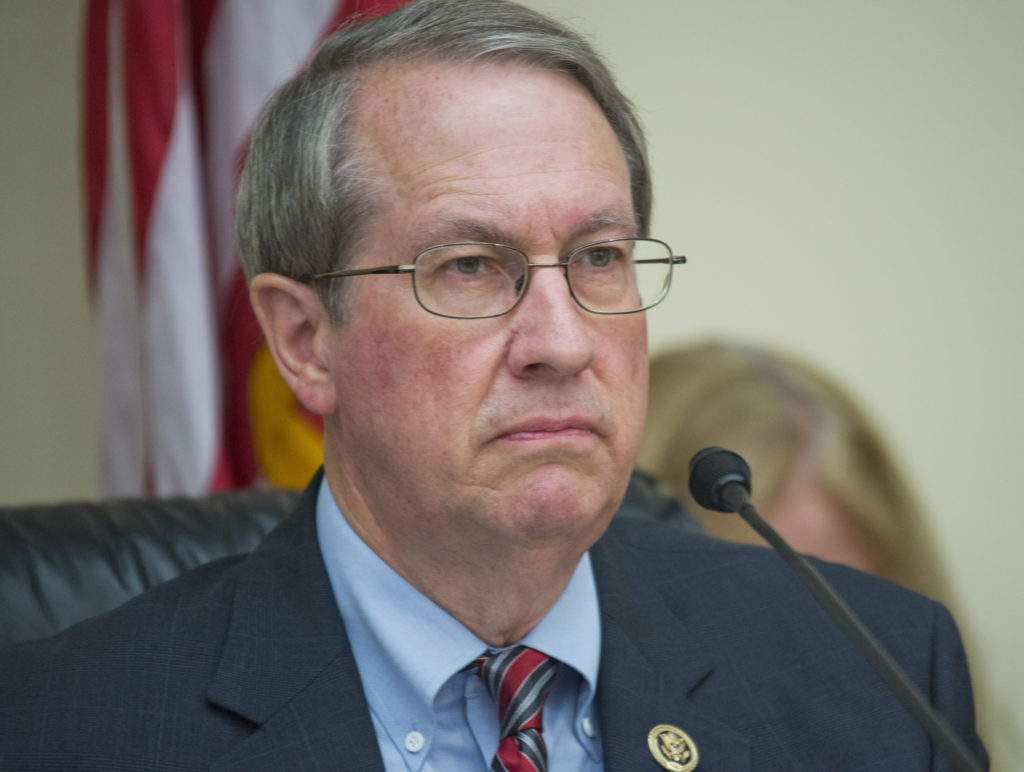
How Illegal Immigrant Suspects in Rockville High Rape Case Were Able to Settle in America
The two teenagers accused of raping a ninth-grader at Maryland’s Rockville High School last month were among more than 150,000 unaccompanied minors who entered the U.S. illegally over the past three years, mostly from Central America.
Like most other Central Americans who are under 18 years old and travel alone illegally to the U.S., the suspects, Jose Montano, now 17, and Henry Sanchez Milian, now 18, were placed briefly into federal custody upon making it across the border with Mexico. Officials then permitted them to join relatives in the interior of the country.
From there, Montano, living with his uncle, and Sanchez Milian, residing with his father, settled in the Maryland suburbs. They enrolled in a public high school—which like all public schools is required to admit illegal immigrants, due to a Supreme Court ruling—as they waited for their day in the country’s overburdened immigration court system.
Montano is originally from El Salvador and Sanchez Milian came from Guatemala. Both suspects say they are innocent of the charges against them.
Rockville High School, part of the Montgomery County school system, is about 20 miles from the White House.
Though illegal immigration has dropped in the early months of President Donald Trump’s administration, the Rockville High School rape case renewed an effort by advocates for tougher enforcement to make it easier to quickly deport Central American minors who illegally travel here alone. That class of minors currently enjoys unique protection in the U.S. due to federal law and court rulings.
“President [Barack] Obama’s lax enforcement of the law and executive amnesty programs encouraged hundreds of thousands of unaccompanied minors from Central America to make the dangerous trek to the United States,” Rep. Bob Goodlatte, R-Va., chairman of the House Judiciary Committee, told The Daily Signal. “Fortunately, the Trump administration is taking a number of important steps to reduce illegal immigration and we are already seeing results.”
Goodlatte added:
While the executive branch is making good progress, we also still need to improve our immigration laws. The House Judiciary Committee plans to take up legislation to address many issues that fueled the border surge.
Restrained Response
In 2014, challenged by a flood of Central American children at the southwest border, the Obama administration faced few good choices on how to respond.
A 2008 law signed by President George W. Bush meant to combat sex trafficking contains a provision that tied Obama’s hands, said Leon Fresco, head of the Department of Justice’s Office of Immigration Litigation in the Obama administration.
The law, the William Wilberforce Trafficking Victims Protection Reauthorization Act, prohibits the government from quickly deporting children who enter the U.S. illegally and alone if they are not from Mexico or Canada.
The law dictates that, within 72 hours, the Department of Homeland Security must turn over custody of such children to the Office of Refugee Resettlement. An agency of the Department of Health and Human Services, the resettlement office provides shelter to the children and finds parents, family, or other sponsors to care for them while they await hearings in immigration courts.
Because the immigration courts are overbooked, it could take years before the appropriate court hears a case.
“The statute is clear that if any federal agency captures a minor who is unaccompanied, their very first step is to send that child to HHS if the child is not Canadian or Mexican,” Fresco said in an interview with The Daily Signal. “That is the clear intent of that statute, and if you try to do anything else, you will get sued almost instantaneously.”
In addition to the trafficking law, in 1997, a settlement agreement arising out of the federal case Flores v. Meese mandated that unaccompanied children be held in the “least restrictive setting” in a “non-secure facility.” The agreement required the children to be released “without unnecessary delay” to a parent, legal guardian, or sponsor.
Fresco says the Obama administration sought flexibility to work around these constraints in the heat of a crisis.
It expedited the court cases of unaccompanied minors, pushing them to the front of the line, so that their statuses were decided quicker. But the administration later abandoned this effort, Fresco said, because judges and immigration advocates expressed concern that the children were not given a sufficient amount of time to enlist a lawyer to argue their case.
In addition, the Obama administration appealed to Congress to make changes to the 2008 trafficking law. It sought to rewrite the law in a way that would allow the government to keep Central American children in custody longer, and process their cases while they were in detention.
Republicans in Congress, meanwhile, wanted to go further and treat all children—including Central Americans—like illegal immigrants from Mexico or Canada, meaning they could be subject to expedited removal, a process by which a noncitizen may be removed from the country without a hearing before a judge.
The two sides deadlocked, and Congress made no changes to the law.
“During the [border] surge, everything was considered,” Fresco said. “The problem we encountered is that without changes to the law, no matter what you try and do differently, it will be litigated. If it looks like you are cracking down heavily on kids, the courts may find that unconstitutional.”
Considering Reforms
With Republicans controlling the House, Senate, and presidency, some lawmakers are pressing to allow immigration authorities greater flexibility in cases involving Central American children.
Goodlatte, the Judiciary Committee chairman, said he is hopeful the House takes action on a bill that would eliminate the special requirements for unaccompanied children contained in the 2008 trafficking bill.
The Protection of Children Act of 2017, introduced in January by Rep. John Carter, R-Texas, would require that a child who came illegally and alone to the U.S. from a country other than Mexico or Canada have a hearing before an immigration judge within 14 days.
Immigration authorities would have 30 days to transfer the child to HHS—rather than 72 hours, as the law now forces.
These rules would be applied only to children who are not a victim of trafficking and who do not have a fear of returning to his or her home country.
The proposed law would direct the Homeland Security Department to investigate the immigration status of the parent, guardian, or other sponsors with whom the child is settled.
If that person is living in the country illegally, the government would have to begin the process of deporting him or her.

Rep. Bob Goodlatte, R-Va., the chairman of the House Judiciary Committee, says Republicans plan to consider legislation to address issues “that fueled the border surge” of 2014. (Photo: Patsy Lynch/Polaris/Newscom)
Fresco said Congress, working with the Trump administration, could seek to change the definition of an unaccompanied minor so it does not include those who have parents or extended family in the U.S.—even if the child traveled alone from his home country to get here.
Children who are not considered unaccompanied could face quick deportation, without a hearing before a judge.
“The U.S. should allow for the expedited return of unaccompanied children,” said David Inserra, a homeland security expert at The Heritage Foundation, arguing that the 2008 trafficking law “should be reformed so as to remove the burdensome process that applies to unaccompanied from noncontiguous countries.”
“This would allow the U.S. to enter into agreements with other countries to more rapidly return such children while maintaining key protections for the safety of trafficked children,” Inserra said.
The Trump administration has not stated if it will encourage change to the 2008 law.
On Jan. 25, five days after he was sworn in, Trump issued an executive action on border security requiring Homeland Security personnel to carry out “proper application” of the trafficking law.
Trump ordered immigration authorities to ensure that unaccompanied children “are properly processed, receive appropriate care and placement while in the custody of the Department of Homeland Security, and, when appropriate, are safely repatriated in accordance with law.”
The Department of Homeland Security did not return emailed questions from The Daily Signal seeking clarification on what “proper application” of the law means, and whether the agency would treat unaccompanied children differently than it did under the Obama administration.
‘We Have to Do Better’
Advocates for immigrants and refugees resist efforts to restrict immigration of Central American minors.
Kevin Appleby, the senior director of international migration policy at the Center for Migration Studies, says that many such children have legitimate claims for asylum or other protection, and are fleeing some of the most dangerous countries in the world.
“Changing the 2008 trafficking law would really cast the most vulnerable populations most in need of protection as economic migrants—which they aren’t,” Appleby told The Daily Signal in an interview. “It would basically eviscerate asylum protection for children.”
Michelle Brane, director of the migrant rights and justice program at the Women’s Refugee Commission, notes that the HHS Office of Refugee Resettlement, working with immigration agencies, conducts an assessment of unaccompanied children before releasing them into the community. The office has the discretion to keep the children in custody if they present a security or flight risk.
Before the 2014 surge of illegal immigration, Brane said, officials placed 60 percent of unaccompanied children into neighborhoods across the country as they waited for a court hearing. In the time since, though, that number has increased to about 90 percent because of limited detention space.
To ensure that unaccompanied children integrate smoothly as they await court hearings, Brane says, the government should do a better job of following up with cases. Officials should make sure the minor plans to show up in court, gets a lawyer, and is being a productive student and classmate.
She said the government provides follow-up oversight in only 5 percent of cases.
“We have to do better than that—for the well-being of the child and the community,” Brane told The Daily Signal in an interview.
Fresco, the former Department of Justice immigration attorney, is sober about the challenge facing policymakers.
“There is an inherent risk of letting anyone in,” Fresco said. “You have to trust that a kid is coming in good faith.”
